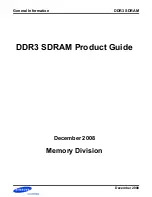
Once the EtherCAT communications are established, the process data becomes valid, therefore val-
ues of the device variables and axes variables that input and output the process data become also
valid. Be sure to read and write the device variables and axes variables that input and output the proc-
ess data, after confirming that the process data is valid.
Use the following system-defined variables to check the validity of the process data.
• Checking the validity of the process data for each slave.
_EC_PDSlavTbl (Process Data Communicating Slave Table)
• Checking the validity of the process data for the entire slaves.
_EC_PDActive (Process Data Communications Status)
Precautions for Correct Use
If noise occurs or an EtherCAT slave is disconnected from the network, any current communi-
cations frames may be lost. If frames are lost, slave I/O data is not communicated, and unin-
tended operation may occur. The slave outputs behave according to the slave specifications.
For details, refer to relevant manuals for each slave. If a noise countermeasure or slave re-
placement is required, perform the following processing.
• Program the
_EC_InDataInvalid
(Input Data Invalid),
_EC_InData1Invalid
(Input Data1 Inva-
lid), or
_EC_InData2Invalid
(Input Data2 Invalid) system-defined variable as an interlock con-
dition in the user program.
• Set the
PDO communications timeout detection count
setting in the EtherCAT master to
at least 2. Refer to
5-4 EtherCAT Master Parameter Settings
on page 5-14 for the setting pro-
cedure.
A sample programming to check the validity of the process data is shown in the next section.
Sample Programming to Check Validity of Process Data for Each
Slave
With this sample program, validity of the process data is checked individually for each slave, and the
data inputs and outputs with the salve are controlled.
The slave with which the process data is input and output is given the node address 1 and named
"slave 1".
The
_EC_PDSlavTbl
(Process Data Communicating Slave Table) system-defined variable is used to
see if the process data inputs and outputs are valid for the slave 1.
If the process data inputs and outputs with the slave 1 are valid,
E001_Out_Bit07
changes to TRUE
when
E001_In_Bit00
changes to TRUE. Also, when the process data outputs with the slave 1 are val-
id,
E001_Out_Bit00
changes to TRUE.
Precautions for Correct Use
If you execute the instructions below, the
_EC_InDataInvalid
(Input Data Invalid),
_EC_InData1Invalid
(Input Data1 Invalid), and
_EC_InData2Invalid
(Input Data2 Invalid) sys-
tem-defined variables will temporarily change to TRUE depending on the task to which the
specified EtherCAT slave is assigned.
• EC_DisconnectSlave (Disconnect EtherCAT Slave)
• EC_ConnectSlave (Connect EtherCAT Slave)
• EC_ChangeEnableSetting (Enable/Disable EtherCAT Slave)
6 Process Data Communications and SDO Communications
6-7
NJ/NX-series CPU Unit Built-in EtherCAT Port User's Manual (W505)
6-1 Process Data Communications (PDO Communications)
6
6-1-3
Checking V
alidity of Process Data
Содержание NJ101-10 Series
Страница 10: ...Manual Structure 8 NJ NX series CPU Unit Built in EtherCAT Port User s Manual W505...
Страница 68: ...2 Part Names and Slave Settings 2 18 NJ NX series CPU Unit Built in EtherCAT Port User s Manual W505...
Страница 80: ...3 EtherCAT Communications 3 12 NJ NX series CPU Unit Built in EtherCAT Port User s Manual W505...
Страница 236: ...9 Troubleshooting 9 38 NJ NX series CPU Unit Built in EtherCAT Port User s Manual W505...
Страница 274: ...Appendices A 38 NJ NX series CPU Unit Built in EtherCAT Port User s Manual W505...
Страница 275: ...I Index I 1 NJ NX series CPU Unit Built in EtherCAT Port User s Manual W505 I...
Страница 279: ......
















































